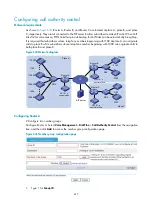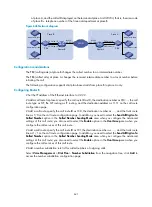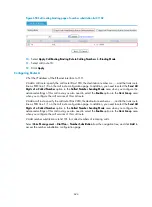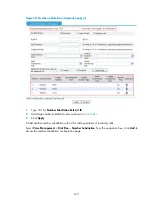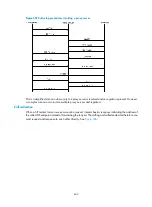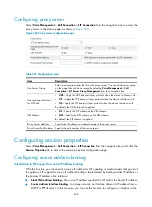
628
Call connection
Introduction to SIP
The Session Initiation Protocol (SIP) is an application layer control protocol that can establish, modify,
and terminate multimedia sessions such as IP phone calls, multimedia session and multimedia
conferences. It is the core component in the multimedia data and control architecture of the IETF (RFC
3261).
SIP is responsible for signaling control in IP networks and communication with soft switch platforms. The
intent is to build a next generation value-added service platform to deliver better value-added services to
telecom carriers, banks, and financial organizations.
SIP is used for initiating sessions. It sets up and terminates a multimedia session involving a group of
participants and dynamically adjusts and modifies session characteristics such as required session
bandwidth, media type (voice, video, or data), media encoding/decoding format, and
multicast/unicast. SIP is based on text encoding, and it is constructed by taking the mature protocol HTTP
as a model. Easy to extend and implement, it is suitable for implementing Internet-based multimedia
conference systems.
Terminology
Multimedia session
According to RFC 2327, a multimedia session is a set of multimedia senders and receivers and the data
streams flowing from senders to receivers. A multimedia conference is an example of a multimedia
session.
A session is identified by a set of username, session ID, network type, address type, and address.
User agent
A user agent (UA), or a SIP endpoint, is a SIP-enabled multimedia session endpoint. Usually, a
SIP-enabled router serves as a SIP UA.
There are two types of UAs: user agent client (UAC) and user agent server (UAS). To make a call, a SIP
endpoint needs to process the SIP request as a UAS and initiate the SIP request as a UAC.
A UAC is a device that initiates a session request. It can be a calling SIP endpoint or a proxy server
forwarding a request to a called endpoint for example.
A UAS is a device that generates a response to a SIP request. It can be a called SIP endpoint or a proxy
server receiving a request from a calling endpoint for example.
Proxy server
A proxy server is a device that forwards session requests to a called UA on behalf of a calling UA (a SIP
endpoint), and responds to the calling UA on behalf of the called UA.
When the proxy server receives a request from a calling UA, it first requests its location server for
information on called UA location and call policies of calling UA and called UA. If the location
information of the called UA is available and the calling UA is allowed to make the call, the proxy server
then forwards the request to the called UA.
Summary of Contents for MSR SERIES
Page 17: ...xv Documents 835 Websites 835 Conventions 836 Index 838 ...
Page 20: ...3 Figure 3 Initial page of the Web interface ...
Page 42: ...25 Figure 13 Firefox Web browser setting ...
Page 59: ...42 Figure 27 Checking the basic service configuration ...
Page 73: ...56 Figure 35 Sample interface statistics ...
Page 156: ...139 Figure 139 Rebooting the 3G modem ...
Page 168: ...151 Figure 152 Configuring Web server 2 ...
Page 174: ...157 Figure 158 Configure the URL filtering function ...
Page 242: ...225 Figure 233 Enabling the DHCP client on interface Ethernet 0 1 ...
Page 247: ...230 Figure 236 The page for configuring an advanced IPv4 ACL ...
Page 255: ...238 Figure 241 Advanced limit setting ...
Page 298: ...281 e Click Apply 2 Configure Router B in the same way Router A is configured ...
Page 400: ...383 Figure 387 Verifying the configuration ...
Page 405: ...388 ...
Page 523: ...506 Figure 530 Ping configuration page ...
Page 775: ...758 Figure 785 Configuring a jump node ...




